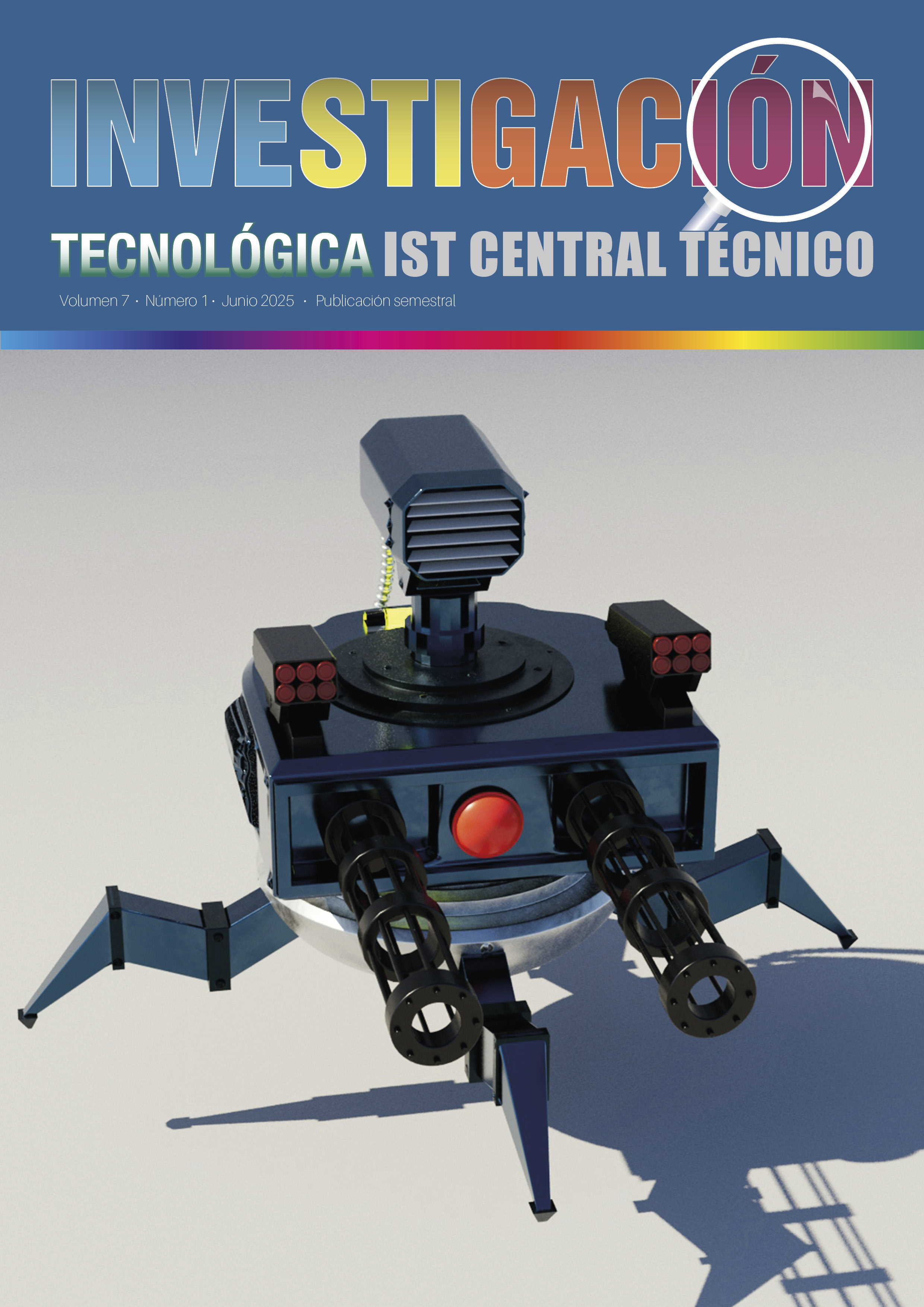COMPARATIVE ANALYSIS OF THE DEFORMATIONS OF A TRUSS BRIDGE USING THE MOLA KIT AND SAP 2000.
Keywords:
deformations,, deformations, truss bridge, Mola Kit, SAP2000, structural analysisAbstract
In the field of structural engineering, the analysis and design of bridges have significantly evolved thanks to the development of physical and digital tools that allow for a better understanding of structural behavior. Physical models, such as those provided by the Mola 2 Kit, offer a tangible and visual experience of basic structural principles. On the other hand, computational tools like SAP2000 provide detailed simulations that enable the exploration of different scenarios in a virtual environment. A visual comparative analysis of the deformations experienced by a truss bridge was conducted using the Mola 2 Kit and SAP2000 software to evaluate the effectiveness of both tools in structural representation. The study used the Mola Kit to build a physical model of the bridge, simulating different load conditions and observing its structural behavior under specific deformations in parallel, computational simulations were performed in SAP2000, applying technical knowledge to obtain comparable results.
References
CSI. (2023). SAP2000: Structural Analysis and Design. Computers and Structures, Inc. Recuperado de https://www.csiamerica.com
Mola Structural Kits. (n.d.). Mola 2 Structural Kit. Recuperado de https://www.molamodel.com.
Timoshenko, S. P., & Gere, J. M. (1961). Theory of Elastic Stability. McGraw-Hill.
Salmon, C. G., Johnson, J. E., & Malhas, F. A. (2008). Steel Structures: Design and Behavior (5th ed.). Pearson.
Eurocode 3. (2005). Design of Steel Structures - Part 1-1: General Rules and Rules for Buildings. European Committee for Standardization (CEN).
Chopra, A. K. (2019). Dynamics of Structures: Theory and Applications to Earthquake Engineering (5th ed.). Pearson Education.
ANSI/AISC 360-16. (2016). Specification for structural steel buildings. AISC.
Barker, R. M., & Puckett, J. A. (2020). Design of Highway Bridges: An LRFD Approach (3rd ed.). Wiley.
Ghosh, S. K. (2016). Practical Design of Steel Structures. CRC Press.
Computers and Structures, Inc. (2021). SAP2000 Integrated Structural Analysis and Design Software. Recuperado de https://www.csiamerica.com/products/sap2000
IOS Press. (2024). Bridge Structures: Assessment, Design, and Construction. Recuperado de www.iospress.com.
Hibbeler, R. C. (2020). Engineering Mechanics: Statics and Dynamics (14th ed.). Pearson Education.
Computers and Structures, Inc. (2023). SAP2000: Structural Analysis and Design Software. Recuperado de https://www.csiamerica.com.
Escobar García, S. (2022). Puentes de concreto de viga cajón híbridos con paredes en celosía [Trabajo de grado - Maestría, Universidad Nacional de Colombia]. https://repositorio.unal.edu.co/handle/unal/82370
Gómez Vera, L. (2021). Revisión histórica de una actividad e innovación docente en el ámbito universitario: Concurso de Estructuras. http://rua.ua.es/dspace/handle/10045/116645
Larena, B. (2021). RECUPERACIÓN DE LA CELOSÍA EN LOS PUENTES DE FIN DE SIGLO.

Downloads
Published
How to Cite
Issue
Section
License
Copyright (c) 2025 Elva Gioconda Lara Guijarro

This work is licensed under a Creative Commons Attribution-NonCommercial 4.0 International License.
COPYRIGHT
The ISTCT Technological Research journal is an Open Access publication, whose contents are disseminated under a Creative Commons Attribution-Non-Commercial license (CC-BY NC 4.0 International). All articles published in the ISTCT Technological Research journal are published in Open Access and are available online for free immediately after publication.
This journal provides metadata for third-party indexing services through the open files initiative.
The ISTCT Technological Research journal recognizes and respects the moral rights of the authors, as well as the ownership of the patrimonial right, which will be transferred non-exclusively to the journal to allow its legal dissemination in Open Access.
The ISTCT Technological Research journal does not reserve the rights to publish articles. Authors may distribute their own material in any other medium or medium, as long as it is for non-commercial purposes, informing the editors that the work will be published again and giving the corresponding credit to the ISTCT Technological Research journal.
Authors can make other independent and additional contractual agreements for the distribution of the article published in this journal (e.g., include it in an institutional repository or publish it in a book) as long as they clearly indicate that the work was published for the first time in "ISTCT Technological Research Magazine". In the case of reproduction, a note similar to the following must be included:
"This text was originally published in REVISTA DE INVESTIGACIÓN TECNOLÓGICA ISTCT N ° -, section -----, number of pages, year of publication."
Authors are recommended to publish their work on the Internet (for example on institutional or personal pages) in the final version published by REVISTA DE INVESTIGACIÓN TECNOLÓGICA ISTCT, as it may lead to a greater and faster dissemination of the published work (see The Effect of Open Access).
The publications in this magazine, due to their free nature, do not entitle the authors to any financial remuneration.


